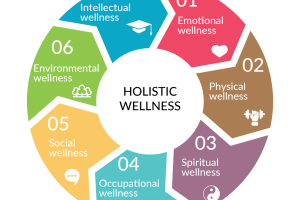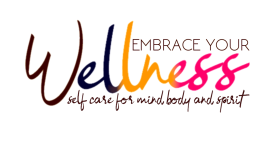Embracing Wellness: A Holistic Approach to Daily Living

Defining Wellness
Wellness is more than just the absence of illness; it encompasses a state of complete physical, mental, and social well-being. It reflects how individuals feel overall, impacting everything from their day-to-day activities to their long-term happiness. For many, achieving wellness is a lifelong journey of self-discovery and personal growth. For instance, consider Jane, a busy professional who felt constantly fatigued. It wasn’t until she defined wellness for herself—not just physically, but emotionally and socially—that she realized her need for balance in all areas of life. By prioritizing wellness, she began investing in her health, relationships, and mental clarity, transforming her life and work.
- Embracing Wellness: A Holistic Approach to Daily Living
- Defining Wellness
- Importance of a Holistic Approach
- Physical Wellness
- Exercise and Movement
- Nutrition and Diet
- Mental Wellness
- Stress Management
- Mindfulness and Meditation
- Emotional Wellness
- Building Resilience
- Cultivating Positive Relationships
- Social Wellness
- Community Involvement
- Support Systems and Networks
- Spiritual Wellness
- Practices for Inner Peace
- Meaning and Purpose in Life
- Environmental Wellness
- Sustainable Living
- Connecting with Nature
Importance of a Holistic Approach
Adopting a holistic approach to wellness means recognizing that these dimensions of life are interconnected. Focusing solely on one aspect, such as physical health, while neglecting mental or emotional well-being often leads to overall dissatisfaction. Key components of a holistic approach include:
- Integration: Addressing all dimensions—physical, mental, emotional, social, spiritual, and environmental—cohesively.
- Personalization: Recognizing that wellness paths vary for each individual.
- Sustainability: Developing practices that can be maintained over the long term.
Health is not just a goal; it’s a lifestyle. By embracing this holistic perspective, one can truly thrive, finding joy and fulfillment in daily life.
Physical Wellness
Exercise and Movement
Physical wellness is a crucial pillar of overall well-being, and one of the most effective ways to enhance it is through regular exercise and movement. Engaging in physical activities not only improves physical health but also boosts mental clarity and emotional stability. Take, for example, Mike, who struggled with low energy levels and stress. After committing to a routine that included daily brisk walks and strength training, he found his mood uplifted and his productivity increased. Regular movement helped Mike to manage his stress levels and invigorate his days. Some effective forms of exercise include:
- Cardiovascular activities: Running, cycling, swimming.
- Strength training: Weight lifting, resistance bands, body-weight exercises.
- Flexibility and balance: Yoga, Pilates, Tai Chi.
Nutrition and Diet
Complementing exercise with proper nutrition is equally vital for maintaining physical wellness. A balanced diet fuels the body and supports its functions. To optimize dietary habits, consider the following tips:
- Whole foods: Focus on fruits, vegetables, whole grains, and lean proteins.
- Hydration: Drink plenty of water throughout the day.
- Mindful eating: Pay attention to portion sizes and savor each bite.
Reflecting on her journey, Sarah, a busy mom, realized how incorporating nutritious meals helped her feel energetic and sharp throughout her hectic days. By prioritizing nutrition alongside physical activity, individuals can enhance their overall physical wellness and enjoy a healthier life.
Mental Wellness
Stress Management
Moving beyond physical health, mental wellness plays a significant role in how individuals navigate daily life. One of the most pressing challenges people face is stress. It can manifest in various ways, impacting mood, sleep, and even physical health. To manage stress effectively, it’s essential to identify stressors and implement coping strategies. For example, Linda, a teacher juggling multiple responsibilities, discovered the power of organization. By maintaining a clear to-do list and setting boundaries, she significantly reduced her stress levels and enhanced her focus. Here are some practical stress management techniques:
- Time management: Prioritize tasks and break them into smaller, manageable steps.
- Physical activity: Engage in regular exercise to release endorphins, improving mood.
- Leisure activities: Make time for hobbies and relaxation to unwind.
Mindfulness and Meditation
In addition to stress management, mindfulness and meditation are powerful tools to foster mental wellness. These practices encourage self-awareness and help individuals stay grounded in the present moment. Consider Sam, who turned to meditation after feeling overwhelmed. By dedicating just ten minutes daily to mindfulness, he found clarity amidst chaos, enabling him to respond to challenges with a calmer mindset. To incorporate mindfulness into daily life, one might try:
- Meditation: Focus on breath or use guided meditation apps to get started.
- Gratitude journaling: Write down what you’re thankful for to nurture a positive mindset.
- Mindful breathing: Take a few moments each day to focus purely on inhaling and exhaling.
By integrating these practices, individuals can alleviate stress and cultivate a deep sense of mental wellness, enriching their overall quality of life.
Emotional Wellness
Building Resilience
As one delves deeper into the components of wellness, emotional wellness stands out as a cornerstone for navigating life’s ups and downs. A significant aspect of emotional wellness is building resilience. Resilience allows individuals to bounce back from adversity, emerging stronger and more focused. For instance, David, a young entrepreneur, faced numerous setbacks when launching his startup. Instead of giving up, he adopted a resilient mindset. By viewing challenges as learning opportunities and maintaining a positive outlook, David managed to overcome obstacles, ultimately achieving his business goals. To cultivate resilience, consider these strategies:
- Stay connected: Reach out to friends, family, or mentors for support during tough times.
- Maintain a growth mindset: Embrace challenges as opportunities for personal development.
- Set realistic goals: Break down larger goals into smaller, achievable steps to build confidence.
Cultivating Positive Relationships
Another key element of emotional wellness is cultivating positive relationships. Healthy social connections contribute to overall happiness and provide invaluable support during challenging times. Anna, a recent college graduate, found herself feeling isolated in a new city. To combat loneliness, she enrolled in community classes and reached out to colleagues. As she built friendships, Anna discovered the profound impact supportive relationships have on mental and emotional health. To foster positive relationships, focus on:
- Effective communication: Be open, honest, and listen actively.
- Express appreciation: Regularly acknowledge and thank friends and loved ones.
- Join community groups: Engage in activities that align with personal interests to meet like-minded individuals.
By nurturing resilience and fostering positive relationships, individuals can enhance their emotional wellness, leading to a more fulfilled and balanced life.
Social Wellness
Community Involvement
Transitioning from emotional wellness, social wellness emphasizes the importance of our connections with others and our involvement in the community. Engaging with one’s community can provide a profound sense of belonging and support, which is vital for overall well-being. Take Megan, for example. After moving to a new town, she initially felt disconnected and lonely. Realizing the importance of community involvement, she volunteered at a local food bank. Not only did she meet new people, but she also gained fulfillment by contributing to a cause greater than herself. To enhance community involvement, consider these actions:
- Volunteer: Join local charities or organizations that resonate with your passions.
- Attend community events: Participate in festivals, workshops, or town hall meetings to meet new people.
- Support local businesses: Frequenting your neighborhood shops fosters community spirit and connection.
Support Systems and Networks
Another crucial facet of social wellness is the establishment of support systems and networks. These connections provide essential emotional and practical assistance during tough times. For instance, Mark lean on his friends during a challenging job loss. By sharing his situation, he received not only empathy but also job leads and valuable networking opportunities. To build a solid support system, focus on:
- Cultivating friendships: Invest time in building and maintaining relationships with friends and family.
- Connecting with mentors: Seek out individuals who can provide guidance in personal or professional avenues.
- Joining interest groups: Engage in clubs or activities that resonate with your interests to expand your network.
By prioritizing community involvement and nurturing support systems, individuals can significantly enhance their social wellness, leading to a richer, more fulfilling life.
Spiritual Wellness
Practices for Inner Peace
Shifting from social wellness, spiritual wellness emphasizes the need for inner peace and a deeper understanding of oneself and one’s place in the world. Many individuals find that cultivating spiritual wellness fosters tranquility amidst life’s chaos. Consider Lisa, who found herself overwhelmed by daily stress. In her quest for inner peace, she started practicing mindfulness and yoga. With these practices, she learned to connect with her breath and embrace moments of stillness, significantly enhancing her emotional state. Here are some effective practices for achieving inner peace:
- Meditation: Dedicate time each day to quiet the mind, allowing for reflection and clarity.
- Nature walks: Spend time outdoors, soaking in the sights and sounds to cultivate a sense of connection to the universe.
- Journaling: Reflect on thoughts and feelings to better understand oneself and find solace in expressing emotions.
Meaning and Purpose in Life
A vital component of spiritual wellness also involves discovering meaning and purpose in life. This journey is unique for everyone, often leading to a profound understanding of what drives individual passions and aspirations. For example, Robert, an office worker, felt unfulfilled in his job. After exploring his interests, he began volunteering with at-risk youth. This experience ignited a sense of purpose, leading him to seek a career that aligned with his values. To explore meaning and purpose in life, consider:
- Reflecting on values: Identify what truly matters to you and pursue those principles.
- Setting intentional goals: Establish personal or professional objectives that resonate with your sense of purpose.
- Exploring spiritual beliefs: Engage with different philosophies or practices to gain insight into yourself.
By nurturing spiritual wellness through practices for inner peace and exploring meaning and purpose, individuals can lead more enriched and fulfilled lives, radiating positivity and resilience.
Environmental Wellness
Sustainable Living
As we transition from spiritual wellness, it’s crucial to acknowledge the role of environmental wellness in our overall health and well-being. Sustainable living practices not only protect our planet but also enhance our quality of life. By making conscious choices, individuals can contribute positively to the environment and foster a sense of responsibility. Take Emily, for instance. After learning about the impact of waste on the environment, she decided to minimize her ecological footprint. She started small: using reusable bags, composting kitchen scraps, and reducing plastic consumption. By embracing sustainable living, Emily feels both empowered and fulfilled by her contributions. To adopt a more sustainable lifestyle, consider these actions:
- Reduce, reuse, recycle: Aim to minimize waste and find new uses for items.
- Choose local produce: Support local farmers and reduce the carbon footprint associated with transporting food.
- Conserve energy: Opt for energy-efficient appliances and reduce electricity consumption by turning off unused devices.
Connecting with Nature
Another important aspect of environmental wellness is the connection we have with nature. Spending time outdoors not only boosts mood but also fosters a deeper appreciation for the environment. John, a city dweller, yearned for a closer connection to nature. He began hiking on weekends, exploring local parks and natural reserves. These experiences not only brought him joy but also reinforced his desire to protect the environment. To nurture that connection, try:
- Nature walks or hikes: Explore nearby trails or parks, soaking in the natural surroundings.
- Gardening: Cultivating plants at home creates a tangible connection with the earth.
- Outdoor mindfulness: Engage in activities like yoga or meditation in natural settings to deepen your appreciation for the environment.
By embracing sustainable living and fostering connections with nature, individuals can significantly improve their environmental wellness, leading to a harmonious relationship with the planet and a richer life experience.





